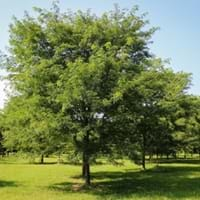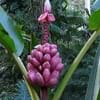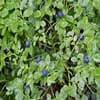Life Span
Annual
Perennial
Origin
China, Korea
Turkey, Iraq, Western Asia, India
Types
Sophora japonica
Tamarix Chinensis, French Tamarisk, Kashgar Tamarix, Tamarix Odessana,
Tamarix Tetrandra
Number of Varieties
Not Available
Habitat
Humid climates, Loamy soils, Low annual rainfall regions, Wet ground, Woods
Floodplains, marshes, Riverbanks, Shores of rivers or lakes
USDA Hardiness Zone
5-9
10-13
Sunset Zone
2a, 2b, 3a, 3b, 4, 5, 6, 7, 8, 9, 10, 11, 12, 13, 14, 15, 16, 17, 18, 19, 20, 21, 22, 23, 24
7, 8, 9, 14, 15, 16, 17, 18, 19, 20, 21, 22, 23, 24
Habit
Oval or Rounded
Upright/Erect
Flower Color
White, Light Green
Purple
Flower Color Modifier
Bicolor
Bicolor
Fruit Color
Green
Not Available
Leaf Color in Spring
Dark Green
Green
Leaf Color in Summer
Dark Green
Green
Leaf Color in Fall
Yellow, Dark Green
Green
Leaf Color in Winter
Not Available
Not Available
Leaf Shape
Elliptic
Scale-like imbricate
Plant Season
Spring, Summer, Fall, Winter
Summer
Sunlight
Full Sun
Full Sun
Growth Rate
Fast
Very Fast
Type of Soil
Clay, Loam, Sand
Loam, Sand
The pH of Soil
Acidic, Neutral, Alkaline
Acidic, Neutral, Alkaline
Soil Drainage
Average
Well drained
Bloom Time
Summer
Summer, Late Summer, Early Fall
Tolerances
Pollution, Drought, Soil Compaction
Drought and Salt, Heat And Humidity
Where to Plant?
Ground
Ground
How to Plant?
Seedlings, Transplanting
Seedlings
Plant Maintenance
Medium
Medium
Watering Requirements
occasional watering once established, Requires watering in the growing season
Average Water Needs
In Summer
Less Watering
Lots of watering
In Spring
Less Watering
Moderate
In Winter
Drought Tolerant
Average Water
Soil pH
Acidic, Neutral, Alkaline
Acidic, Neutral, Alkaline
Soil Type
Clay, Loam, Sand
Loam, Sand
Soil Drainage Capacity
Average
Well drained
Sun Exposure
Full Sun
Full Sun
Pruning
Prune when young, Remove dead branches
Cut leaves after fall, Prune after flowering, Remove damaged leaves, Remove dead branches, Remove dead leaves
Fertilizers
All-Purpose Liquid Fertilizer
All-Purpose Liquid Fertilizer
Pests and Diseases
Leaf spot, Red blotch, Woodpecker feeding
Mineral deficiencies, Red blotch, Root knot nematode, Scale, yellow-poplar weevil
Plant Tolerance
Drought, Dry soil, Soil Compaction
Drought, Dry Conditions, Salt
Flowers
Showy
Not Available
Flower Petal Number
Single
Single
Foliage Texture
Medium
Fine
Foliage Sheen
Matte
Matte
Attracts
Bees, Hummingbirds, Woodpeckers
Not Available
Allergy
Eczema, Nausea, Swelling in the face
allergic reaction
Aesthetic Uses
Bouquets, Landscape Designing, Showy Purposes
Ground Cover, Showy Purposes
Beauty Benefits
Nourishes scalp, Restores Hair Colour, Stops hair loss
Not Available
Edible Uses
Sometimes
Yes
Environmental Uses
Air purification, Erosion control, Forms dense stands, Shadow Tree
Air purification
Medicinal Uses
Diuretic, Fever, Muscle Pain, Vomiting
Diarrhea, Liver problems, Rheumatism, Skin wounds, Tooth ache
Part of Plant Used
Bark, Leaves
Sap, Wood
Other Uses
Used as a laxative, Used as firewood, Used as Ornamental plant, Used in construction
Traditional medicine, Used as Ornamental plant, Used for its medicinal properties
Used As Indoor Plant
No
No
Used As Outdoor Plant
Yes
Yes
Garden Design
Shade Trees, Street Trees, Topiary / Bonsai / Espalier
Screening / Wind Break
Botanical Name
SOPHORA japonica
TAMARIX dioica
Common Name
Chinese Scholartree, Japanese Pagoda
Dioecious Tamarisk, Tamarisk
In Hindi
Gobur champ
तामरिस्क
In German
Japanischer Schnurbaum
Tamariske
In French
Styphnolobium japonicum
tamarinier
In Spanish
Styphnolobium japonicum
tamarisco
In Greek
Styphnolobium japonicum
ταμαρίς
In Portuguese
Styphnolobium japonicum
tamarisco
In Polish
Perełkowiec japoński
tamaryszek
In Latin
Styphnolobium japonicum
nemore
Phylum
Angiosperms
Magnoliophyta
Class
Magnoliopsida
Magnoliopsida
Order
Fabales
Caryophyllales
Family
Fabaceae
Tamaricaceae
Genus
Styphnolobium
Tamarix
Clade
Angiosperms, Eudicots, Rosids
Angiosperms, Core eudicots, Eudicots
Tribe
Sophoreae
Not Available
Subfamily
Faboideae
Not Available
Number of Species
Not Available
Season and Care of Japanese Pagoda and Tamarisk
Season and care of Japanese Pagoda and Tamarisk is important to know. While considering everything about Japanese Pagoda and Tamarisk Care, growing season is an essential factor. Japanese Pagoda season is Spring, Summer, Fall and Winter and Tamarisk season is Spring, Summer, Fall and Winter. The type of soil for Japanese Pagoda is Clay, Loam, Sand and for Tamarisk is Loam, Sand while the PH of soil for Japanese Pagoda is Acidic, Neutral, Alkaline and for Tamarisk is Acidic, Neutral, Alkaline.
Japanese Pagoda and Tamarisk Physical Information
Japanese Pagoda and Tamarisk physical information is very important for comparison. Japanese Pagoda height is 1,220.00 cm and width 1,220.00 cm whereas Tamarisk height is 460.00 cm and width 460.00 cm. The color specification of Japanese Pagoda and Tamarisk are as follows:
Japanese Pagoda flower color: White and Light Green
Japanese Pagoda leaf color: Dark Green
Tamarisk flower color: Purple
- Tamarisk leaf color: Green
Care of Japanese Pagoda and Tamarisk
Care of Japanese Pagoda and Tamarisk include pruning, fertilizers, watering etc. Japanese Pagoda pruning is done Prune when young and Remove dead branches and Tamarisk pruning is done Cut leaves after fall, Prune after flowering, Remove damaged leaves, Remove dead branches and Remove dead leaves. In summer Japanese Pagoda needs Less Watering and in winter, it needs Drought Tolerant. Whereas, in summer Tamarisk needs Lots of watering and in winter, it needs Average Water.





